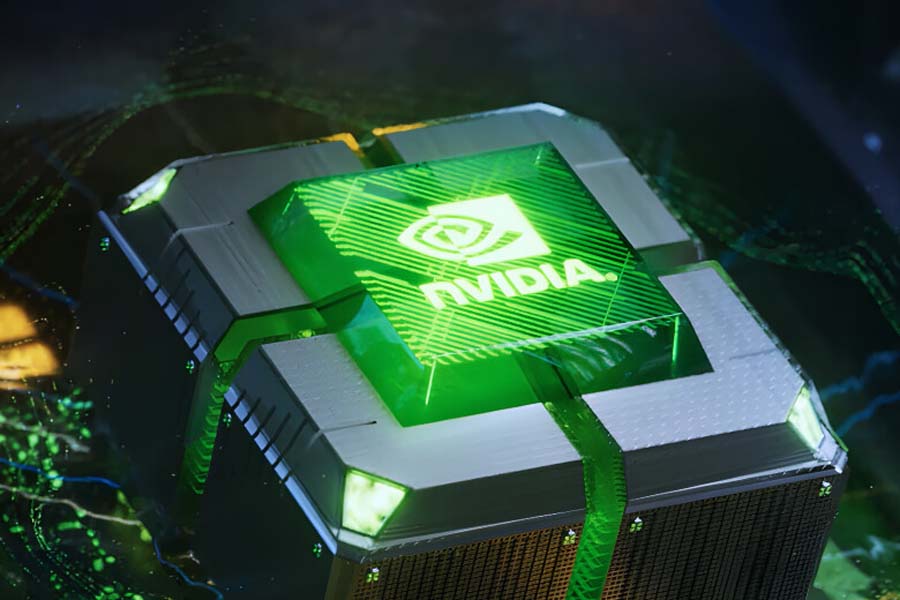
AI has become the hottest topic in tech, and the competition in this field is growing faster than a viral TikTok dance. Every day, we hear about something new in the world of artificial intelligence. The most exciting recent development is OpenAI’s move into AI chip development. Let’s dive into the depths of this big AI news.
OpenAI’s Chipset
Nvidia’s Dominance
Nvidia currently holds the crown in the AI chip market. Its processors power most of the world’s large language models (LLMs) and generative AI applications. But there’s a new challenger joining the ring, and it’s none other than OpenAI itself.

Enters OpenAI
According to the latest reports, OpenAI is gearing up to release its own custom AI chips by the end of this year. For now, it is facing some head-to-head competition, especially with new players like DeepSeek launching their models against ChatGPT. However, the company isn’t backing down from the challenge.
- Also, read:
The ChatGPT maker is working on a new AI chipset designed to reduce its dependence on Nvidia’s hardware. The team is putting the final touches on the design for their first in-house processor, with plans to send it off for fabrication at Taiwan Semiconductor Manufacturing Company (TSMC). This process of sending the first design through a chipset factory called “taping out” can cost tens of millions of dollars. If for some reason the chip doesn’t work on the first try (which is often the case), they will have to restart the whole process. But if things go smoothly, OpenAI will be one step closer to mass-producing its own AI chips possibly even offering an alternative to Nvidia’s.
A few more words
As I have mentioned already, OpenAI depends heavily on Nvidia for its chips, which are used to train and run its AI models. Now the company is gearing up to reduce this reliance. To make that happen, the company has partnered with TSMC and Broadcom. TSMC will use cutting-edge 3-nanometer technology and high-bandwidth memory to produce the new chips.

Richard Ho, who joined OpenAI from Google more than a year ago, is leading the chip development program. Moreover, the team working on this project has grown from 20 to 40 members, especially since OpenAI teamed up with Broadcom, a global supplier of semiconductors and infrastructure.
Initially, OpenAI plans to deploy its new chip on a “limited scale” to run AI models. However, the company has big plans for future versions of the chip. So, while the first generation of OpenAI’s chips might be relatively modest, the potential for future versions could be huge.
The big question
Tech giants like OpenAI are pouring billions of dollars into building AI infrastructure and buying chips to power their data-hungry AI models. It doesn’t look like this spending will slow down anytime soon. But with new AI startups like DeepSeek entering the scene, do you really need to purchase thousands of chips just to keep up?

Moreover, even giants like Microsoft and Meta have struggled to create chips that live up to their expectations, despite years of effort. So, the big question is: Can OpenAI spark a revolution with its own AI chip, or will it join the struggling team? Only time will tell.
- Also, read our 3D Printer review:







![Best Gaming Laptops in Nepal Under Rs. 250,000 (रु 2.5 Lakhs) [2025] Best Gaming Laptops Under 2.5 lakhs in Nepal [Feb 2025 Update]](https://cdn.gadgetbytenepal.com/wp-content/uploads/2025/02/Best-Gaming-Laptops-Under-2.5-lakhs-in-Nepal-Feb-2025-Update.jpg)
![Best Gaming Laptops in Nepal Under Rs. 120,000 (रु 1.2 Lakhs) [2025] Best Budget Gaming Laptops Under Rs 120000 in Nepal 2025 Update](https://cdn.gadgetbytenepal.com/wp-content/uploads/2025/05/Best-Budget-Gaming-Laptops-Under-Rs-120000-in-Nepal-2024-Update.jpg)
![Best Laptops Under Rs. 80,000 in Nepal [2025] Best Laptops Under 80,000 in Nepal March 2025 Update](https://cdn.gadgetbytenepal.com/wp-content/uploads/2025/03/Best-Laptops-Under-80000-in-Nepal-March-2025-Update.jpg)
![Best Gaming Laptops in Nepal Under Rs. 200,000 (रु 2 Lakhs) [2025] Best gaming lapotp under 2 lakhs Nepal Feb 2025](https://cdn.gadgetbytenepal.com/wp-content/uploads/2025/01/Best-Gaming-Laptops-Under-2-Lakh-Nepal-Feb-2025-Update.jpg)

![Best Mobile Phones Under Rs. 15,000 in Nepal [Updated 2025] Best Phones Under 15000 in Nepal 2024 Budget Smartphones Cheap Affordable](https://cdn.gadgetbytenepal.com/wp-content/uploads/2024/03/Best-Phones-Under-15000-in-Nepal-2024.jpg)
![Best Mobile Phones Under Rs. 20,000 in Nepal [Updated] Best Mobile Phones Under NPR 20000 in Nepal 2023 Updated Samsung Xiaomi Redmi POCO Realme Narzo Benco](https://cdn.gadgetbytenepal.com/wp-content/uploads/2024/01/Best-Phones-Under-20000-in-Nepal-2024.jpg)
![Best Mobile Phones Under Rs. 30,000 in Nepal [Updated 2025] Best Phones Under 30000 in Nepal](https://cdn.gadgetbytenepal.com/wp-content/uploads/2025/01/Best-Phones-Under-30000-in-Nepal.jpg)
![Best Mobile Phones Under Rs. 40,000 in Nepal [Updated 2025] Best Phones Under 40000 in Nepal 2024 Smartphones Mobile Midrange](https://cdn.gadgetbytenepal.com/wp-content/uploads/2024/02/Best-Phones-Under-40000-in-Nepal-2024.jpg)
![Best Mobile Phones Under Rs. 50,000 in Nepal [Updated 2025] Best Phones Under 50000 in Nepal](https://cdn.gadgetbytenepal.com/wp-content/uploads/2025/01/Best-Phones-Under-50000-in-Nepal.jpg)
![Best Flagship Smartphones To Buy In Nepal [Updated] Best flagship phone 2025](https://cdn.gadgetbytenepal.com/wp-content/uploads/2024/07/Best-Flagship-Phones-who-is-it-ft-1.jpg)